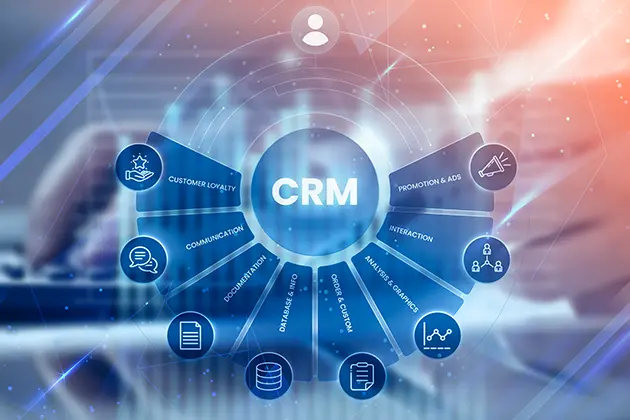It seems like everyone is fighting over customers (existing and new). Promotions, giveaways, coupon codes, anything it takes to keep the customer coming back. But what a lot of companies tend to overlook is customer service and personalization.
In theory, customer service is everybody’s main priority, but in practice, customers are left with generic responses that ruin their shopping experience and make them want to look for products elsewhere.
The reality is, as hard as you try, it can be tough to keep up with everything a business needs and also keep customer service top-notch. A CRM system could help you out here because it has a better understanding of what your customers need, provide faster service, and create more personalized experiences.
Let’s see how this can make customers more loyal to your brand.
The Strategic Role of Data in Personalizing Customer Interactions
What do you think is the most valuable asset your business can have? If you thought of anything other than customer data, you’re sorely mistaken.
Customer data will give you insights into what customers like, how they behave, and what they need. You can then use this data to create personalized experiences that make customers feel valued and not like they’re just another number in your system.
According to Dimension Data, about 84% of businesses that work to improve customer experience have noticed/reported an increase in revenue.
Also, keep in mind that (according to Semrush) customer retention costs way less than acquiring new customers. Also, existing customers tend to spend more (and more often) than new customers. This just means that using data about existing customers is much more beneficial for your business than focusing mainly on getting new ones (which, regardless, is still an important aspect of sales).
When a CRM system is integrated with other tools, like eCommerce platforms or Global Supply Chain Inventory systems, it results in a detailed and clear view of customer behavior. This is because when you link a CRM with a (for example) GSI system, you get the ability to merge online customer interaction data with offline inventory/supply chain data.
This means that the customers can receive targeted offers and recommendations that are more relevant to each of them.
Think of a clothing store using this type of system; if their customer buys a jacket online, the store could later send a discount for matching accessories in an e-mail. This kind of personalization builds stronger connections and makes customers want to return to the store.
Enhancing Service Delivery Through CRM Integration
When you connect a CRM to another system like ERP, you get a more efficient and responsive service environment. Here’s how integration can make a difference:
Streamlining Customer Service
A CRM system that’s integrated with tools like ERP or helpdesk software, all of your information on the customer is in one place. This will allow service teams to quickly access it, plus they will have an easier time resolving issues and providing support across different channels.
Better Responsiveness and Efficiency
Integration reduces the time it takes to respond to customers’ questions. A service representative will be able to answer faster because they won’t have to look through different systems to find the information they need.
Automated workflows and notifications can also make sure that no requests fall through the cracks.
Customer Satisfaction and Retention
Imagine yourself being a customer; if you get good service, do you feel better about the company? Of course, you do.
It will make you keep coming back to them because you can expect your issues to be solved quickly, and you can count on generally having a positive experience. This leads to higher retention rates because if you get both a good product and good service, why take your business anywhere else?
Creating a Smooth Customer Experience Across All Channels
Your customers won’t interact with your business in just one way. It’s the modern times, after all, and they’ll communicate online, through social media, in-store, and on mobile apps. You want their experience to be smooth and consistent regardless of the channel.
An omnichannel approach means providing a unified, consistent experience for customers, no matter where they’re interacting with your business. This is important because they expect a seamless journey across different channels, and any disconnect will frustrate them.
If you integrate a CRM system across various touchpoints, you make sure your customer data is shared and updated in real-time. So, whether a customer interacts with your brand on social media, in an app, or in a physical store, they receive the same level of personalized experience.
For example, if they start a conversation on social media and later drop by the store, staff can pick up right where the conversation left off, thanks to the CRM integration. Imagine a retail brand that uses CRM integration to track customer interactions across all its channels. They browse some products online, but they don’t make a purchase.
In this case, the CRM can trigger a personalized follow-up e-mail with recommendations. And when that customer visits the store, the staff can see their browsing experience and offer better assistance.
This makes for a very smooth, connected experience that makes the customer feel valued and understood.
Conclusion
A CRM integration can be a really powerful strategy to strengthen customer loyalty and improve retention. You can use the data you have on them to provide better, more personalized service and make them feel like they’re important to your brand.
Loyal, existing customers are 60-70% more likely to buy than new prospects (only 5-20%).
Remember that no matter how successful your business is, it’s your customers that recognize its value and make it grow.










